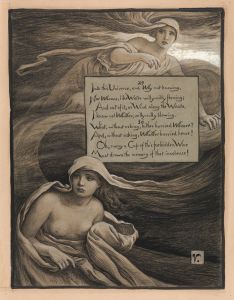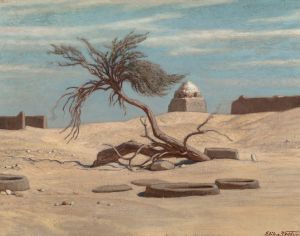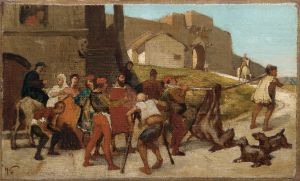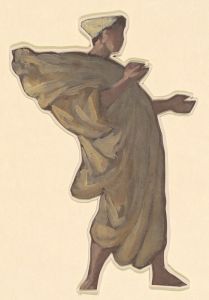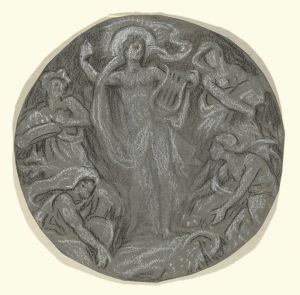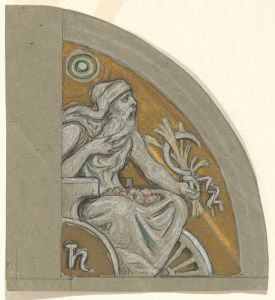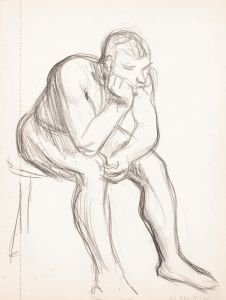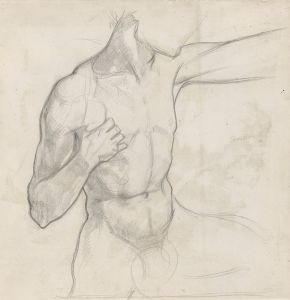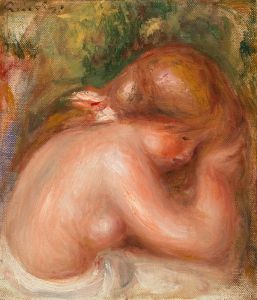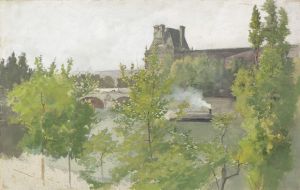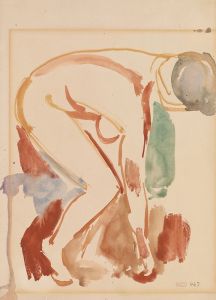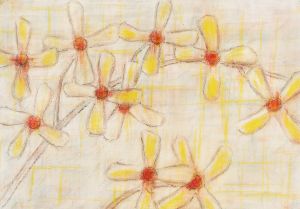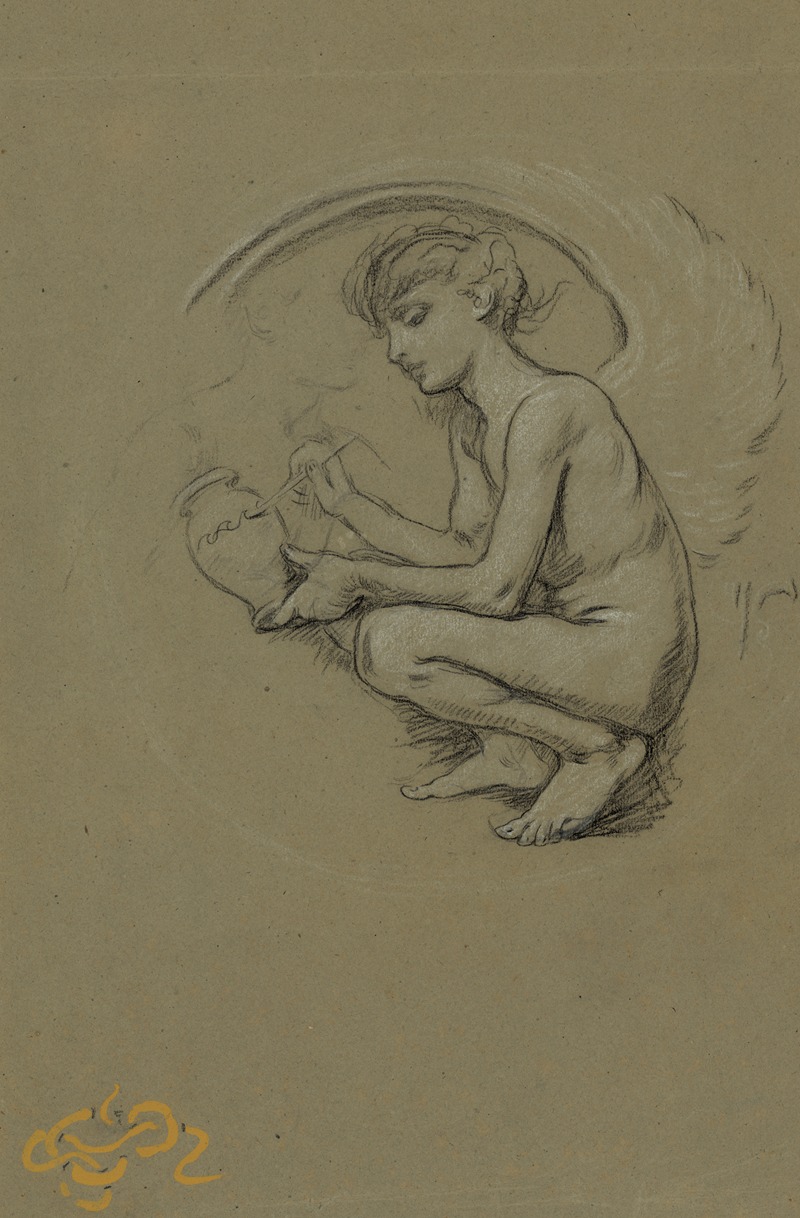
Study of figure of Arts
A hand-painted replica of Elihu Vedder’s masterpiece Study of figure of Arts, meticulously crafted by professional artists to capture the true essence of the original. Each piece is created with museum-quality canvas and rare mineral pigments, carefully painted by experienced artists with delicate brushstrokes and rich, layered colors to perfectly recreate the texture of the original artwork. Unlike machine-printed reproductions, this hand-painted version brings the painting to life, infused with the artist’s emotions and skill in every stroke. Whether for personal collection or home decoration, it instantly elevates the artistic atmosphere of any space.
Elihu Vedder was an American symbolist painter, born in 1836 and known for his allegorical works and illustrations. One of his notable works is the "Study of Figure of Arts," which exemplifies his unique style and thematic focus. Vedder's work often delved into themes of mysticism, symbolism, and the human condition, reflecting the broader movements of the late 19th century.
The "Study of Figure of Arts" is a testament to Vedder's fascination with allegory and symbolism. Although specific details about this particular painting are scarce, Vedder's oeuvre generally explores the intersection of art, philosophy, and mythology. His works are characterized by a dreamlike quality, often incorporating elements of fantasy and the surreal. This approach aligns with the symbolist movement, which sought to express the ineffable and explore the deeper meanings behind the visible world.
Vedder's artistic journey began with his studies in Europe, where he was influenced by the Renaissance masters and the burgeoning symbolist movement. His time in Italy, in particular, left a lasting impact on his style and thematic choices. The "Study of Figure of Arts" likely reflects these influences, showcasing his skill in blending classical techniques with modern themes.
Throughout his career, Vedder was known for his meticulous attention to detail and his ability to convey complex ideas through visual art. His works often feature intricate compositions and a rich use of color and texture. The "Study of Figure of Arts" would be no exception, likely demonstrating his ability to capture the essence of his subjects while imbuing them with symbolic meaning.
Vedder's contributions to the art world extend beyond his paintings. He is perhaps best known for his illustrations for the Rubáiyát of Omar Khayyám, a collection of quatrains by the Persian poet. These illustrations further exemplify his skill in merging visual art with literary themes, creating a cohesive narrative that enhances the viewer's understanding of the text.
In addition to his paintings and illustrations, Vedder was also a writer and thinker, engaging with the intellectual currents of his time. His works often reflect his philosophical inquiries and his interest in the metaphysical aspects of life. This intellectual curiosity is evident in the "Study of Figure of Arts," which likely serves as a visual exploration of the role of art in society and the human experience.
Elihu Vedder's legacy is marked by his ability to transcend the boundaries of traditional art, creating works that resonate with viewers on multiple levels. His "Study of Figure of Arts" is a prime example of his skill in using art as a medium for exploring deeper truths and engaging with the mysteries of existence. While specific details about this painting are limited, its place within Vedder's body of work underscores his importance as a symbolist artist and his enduring influence on the art world.





